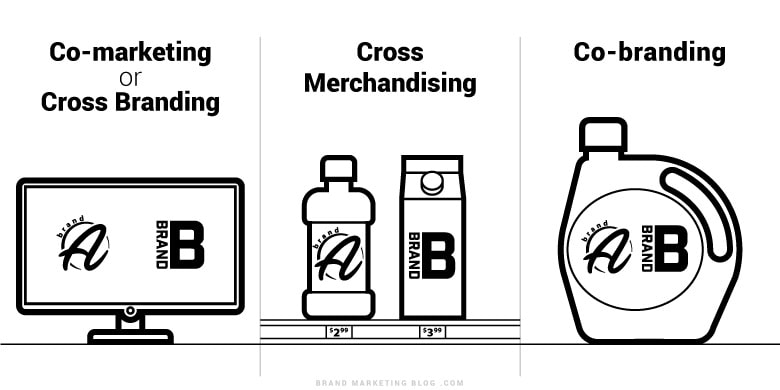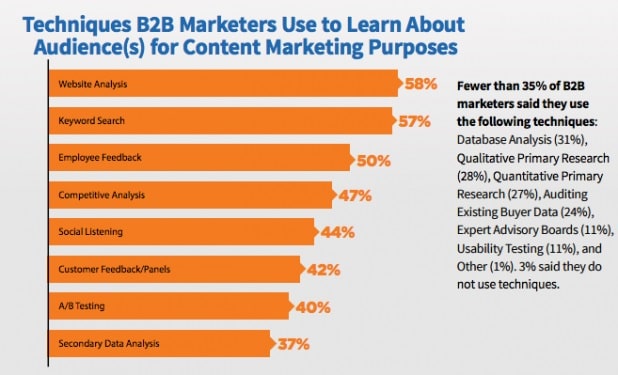What is that one thing that keeps brands on the top of their marketing game? Innovation. It is all about how brands leverage innovative marketing strategies by doing something creative to entice their audience.
An excellent way to shape your brand’s name and fame is by partnering with another brand to market your products. Co-marketing is the way to do that.
By building meaningful collaborations with other brands, co-marketing helps provide lasting value to the audience and boosts the brand’s image.
Here is a guide that can help you get started with co-marketing.
What is co-marketing?
Co-marketing refers to a collaboration between two brands that develop a marketing campaign to achieve a mutual goal. It is also known as partnership marketing. Co-marketing can be worth implementing for any brand that wants to broaden its audience sphere, boost brand awareness, and experiment with a new kind of content cost-effectively.
Let’s take an example. Think of a company that manufactures furniture, say IKEA, and another that promotes sustainability, like The Earth Love. The two brands could partner to deliver a sustainable furniture range. Voila, there you have something unique and new with no extra effort!
As a brand, co-marketing allows you to provide unique content that promotes both parties. The best part is, co-marketing doesn’t look like a forced marketing gimmick. The trick is to pick your partners wisely and create a campaign that’s both relatable and relevant to your target audience.
Well, just a little bit of creativity goes a long way in co-marketing, if you have an eye out for opportunities.
Why is co-marketing important?
Co-marketing aims to offer mutual benefits to both participating brands. In other words, co-marketing can improve a brand’s reputation, create unique content and save tons of money.
Leveraging new partnerships across various business verticals opens up new avenues for more talent working on the same project.

Furthermore, collaborating with another brand allows you to leverage their customers too. Co-marketing also lets you share the risk and increase your marketing capacity as you share the budget with your partner.
Co-marketing is often used to validate a brand that may have lost its customer loyalty or appeal. For instance, when Roger Penske, the owner of the automobile racing team Penske Racing / The Penske Corporation bought Saturn from General Motors (GM), sales spiked to 35 percent compared to GM’s previous year’s performance.

People were inclined to buy a car from the “car guy, a.k.a Roger Penske” instead of purchasing it from GM. Both the brands benefited from this deal and got an entirely new approach to market Saturn.
Another classic example of co-marketing is the famous “Intel Inside” campaign in which major manufacturers, from Apple to HP, promoted “Intel inside” to validate their computer processors.
Co-marketing also helps your business foster fruitful relationships with brands outside your domain, unified around a common cause. It’s an excellent way to build a network of potential and qualified leads to guide into making conversions.
From collaborating on resources, skills, and expertise to sharing higher ROI and visibility, co-marketing allows you to get the best of all worlds cost-effectively.
Creating a co-marketing strategy: How to do it?
The most crucial thing when building a co-marketing strategy is to make sure the purpose and objectives of the project are similar for both partners. If one partner wants leads, but another is looking to sell tickets for their upcoming annual event, you’ll be hard-pressed to create a campaign that meets both goals. Here’s how you can perfect your co-marketing strategy like a pro!
1. Select your partner
When pitching to your partner brand for co-marketing, always go for quality over quantity. Instead of carpet bombing your pitch to a bunch of companies, do your research. Select your partner that matches your campaign goals.
It’s good to get into your partner’s shoes and understand the challenges you can solve with the partnership. For instance, if a brand is looking to expand its reach in your area, you can offer to run a local promotion with them.
Be honest and rational while pitching your brand story to the target partner. It’s vital to ensure that your partner is a part of the big picture and you are aware of their goals. In other words, make it about them, not about you.
Sure, you need to boast about your brand a bit to establish your authority at some point, but don’t overdo it. Remember, our goal is to get the potential partner to see some value in your proposal. That said, here’s a sample pitch email.
Hi [potential partner’s name]!
_I hope you’re well. I’m a blogger, and my blog [link to your blog] has monthly traffic of [insert impressive figures here]. I’ve long been a follower of your brand. I observed that you’re planning to launch [name of product] soon, and I was hoping to review your latest offerings and write about them in my blog. _
You’d get great visibility on my blog, which caters primarily to [potential partner’s target audience, research wisely]. My readers love to know about your products and their benefits.
_If the partnership sounds good to you, please let me know to discuss the details further. _
Thank you!
[Your name]
P.S. I thought your recent interview with [name of publication] was really great. (personal connect)
Short, simple, and to the point. Notice that the email is straightforward and personalized. Assume that your potential partners are busy, so value their time and put across your message in limited but impactful words. You can discuss the details of the collaboration in the next email. It’s the best way to follow up as well.
2. Set goals that benefit both you and your partner
Co-marketing is all about making efforts towards a common goal. While setting up your mutual goals, do define measurable performance indicators to track your progress. Use the SMART strategy to set your targets. SMART stands for Specific, Measurable, Inspirational, Realistic, and Time-bound goals that allow you to plan your deliverables wisely.
Here’s an example to understand how to set co-marketing goals. LEGOLAND and Volvo collaborated to create an exciting marketing campaign around road safety.
The campaign came across as a natural extension as both the brands shared a common goal advocating the cause of road safety and had the same target audience– young drivers.
Their campaign goals fit well in the SMART strategy.

The two brands agreed on a number. The campaign targeted to reach out to younger audiences and aimed to drive at least 1.3 million annual visitors to the theme parks in a year; that’s a time-bound goal. The strategy was based on realistic data findings and within quantifiable measures.
In short, before you start your co-marketing campaign, let your partner know your vision and expectations from the campaign and be able to work in tandem with your partner’s goals.
3. Decide the topic and timeline
Once your planning bit is sorted, the execution begins. To plan your content, it’s generally a good practice to have a standard worksheet stating the essential, actionable items like campaign themes along with roles and responsibilities and timelines for the entire team (from both the brands) to refer to and work smoothly.
While deciding the topics of themes of the campaign, both parties need to think from the customers’ standpoint to produce more relatable content. Using authentic images, videos and experiences is a great way to deliver content that resonates with people. Platforms like Shotkit offer helpful online resources and guides that can help you brush your creative skills.
Doing proper market research will help you deliver quality content specific to your customers, driving meaningful conversions. Content marketers follow a variety of techniques to learn about what their customers are looking for.

While finalizing the content, also focus on creating the next stage’s deliverables—the distribution of content. Work out on various means to populate the content through shared landing pages, emailers, social media, and blogs. Working with multiple teams takes longer than the usual process. Hence, planning in advance will help you save time and be more efficient.
4. Draw up the agreement
Like most things in business, your co-marketing partnership must be bound by an agreement as well. With a formal agreement in place from the start, you have something in hand to go back to if anything goes wrong. Here’s a list of things you must include in your agreement:
- Goals: the shared targets you would like to achieve by the end of your partnership
- Timelines: the time frame in which you want to finish the campaign
- Deliverables: the final outputs that you aim to deliver from a particular campaign
- Budget: the amount you are willing to spare for the campaign together
- Content dissemination: all sorts of platforms you want to distribute the content like social media, emailers, landing pages, etc.
- Confidentiality clause: to protect the confidentiality of your brand’s critical figures and information following the security measures within teams
For example, if you choose to bundle your products with another company, you’ll need to set a budget for promotions as well as decide on the profit-sharing model. A partnership agreement puts together all the steps that two partners will take in exchange for products or services and the legal terms. Once you have closed the terms, you are all set to execute your co-marketing strategy.
Related Content
- 8 Winning Examples of Co-Branding Partnerships To Inspire You Today
- Cost-Effective Digital Marketing Strategies
- 20 Best Local Marketing Strategies and Tips to Reach Your Customers
- The Comprehensive Guide to Effective Social Media Marketing
- How to Market on Instagram: 40 Ideas, Tips & Examples
In closing
Co-marketing campaigns work like a charm if you are looking to add creativity to your marketing strategy. Don’t hesitate to dabble with different sorts of ideas. Just know how to pick a partner, set your goals, define your content topics and timelines. Don’t forget to state everything in black and white on a contract to avoid any miscommunication. Good luck with your next co-marketing partnership!

Written by our guest writer Mark Condon, founder of Shotkit
Shotkit is the go-to website for anything related to photography. If Mark isn’t busy shooting weddings, you’ll find him writing reviews about the latest camera gear for the site himself.



